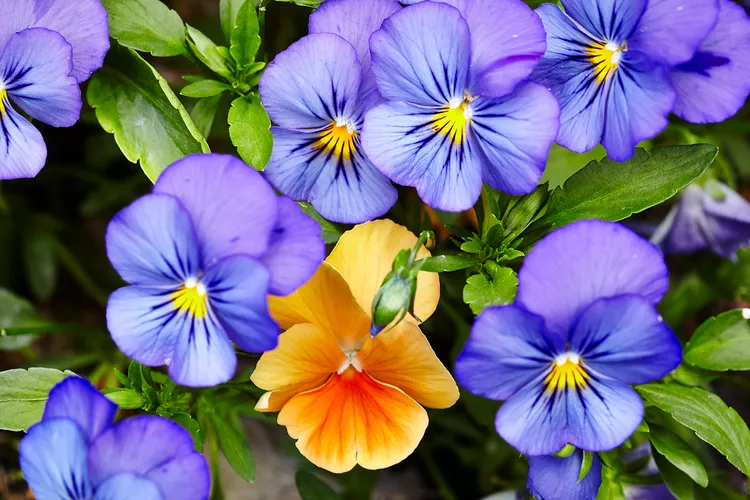Pansies are cool-season workhorses, providing cheerful color in spring and fall when not much else is blooming. But if you're wondering, are pansies perennials that will survive freezing winters, the answer is that they are are technically short-lived perennials. They can overwinter in areas as cold as Hardiness Zone 4, but a layer of insulating snow or mulch can help increase their chances of surviving the coldest conditions. However, pansies are usually grown as annuals in most areas of the U.S. or as biennials in areas with cool summers and mild winters.
Pansies (Viola x wittrockiana) don’t reliably keep coming back year after year unless they self-seed. And because most purchased pansies are hybrids, the plants that result from self-seeding likely won’t look the same as the parent plants.
Types of Pansies
Pansy blooms are commonly divided into solid colors, stripes, and faces or blotches. Breeders have developed large, petite, and even frilly-petalled varieties. Pansies can have single, semi-double, or double flowers, and they bloom in shades of blue, yellow, orange, purple, burgundy, white, peach, and pink.
People sometimes refer to pansies as violas, and while they are related, violas typically have much smaller flowers. Some violas are perennial, though, so if you are looking for pansy-like blooms and colors but want a perennial, check out these native perennial violas: Labrador violet (Viola labradorica), common blue violet or wood violet (V. sororia), and birdsfoot violet (V. pedata).
When to Plant Pansies
Most of us buy pansies in four-packs or six-packs from the garden center, so the selections are limited. These pansies can be planted in the fall in much of the U.S. for color during autumn and even early winter in warmer areas. Many gardeners plant pansies in the spring once the soil is workable. You can set them out when there is still a danger of light frost, but wait to plant them until hard freezes are not likely.
Choose a location in full or part sun with good drainage. Work in some compost and loosen the soil. Make a hole and plant pansies at the same depth as in the container. Firm up the soil around them and water them well. Add a layer of mulch around them to reduce weeds and conserve moisture.
Growing Pansies from Seed
Pansies are easy to grow from seed. Starting pansies from seed allows you to take advantage of all the unique color and flower variations not usually available at garden centers. However, pansies can take a while to germinate, so you'll want to plan ahead and be patient.
- Fill a tray with a moistened, high-quality seed-starting mix.
- Sow the pansy seeds indoors about 10-12 weeks before the last frost date in your area. Press the seeds lightly into the growing medium.
- Cover the entire flat with a few sheets of newspaper or place it into a black bag. Pansy seeds require darkness to germinate. Check occasionally to confirm the growing medium remains moist.
- After the seedlings pop up in about two to three weeks, remove the covering and provide bright, direct light.
- You’ll need to supply supplemental lighting, such as a grow light, because a sunny window usually isn’t enough to keep them from getting leggy.
When the seedlings are robust and the weather has warmed, they are ready to transplant to the garden.




















